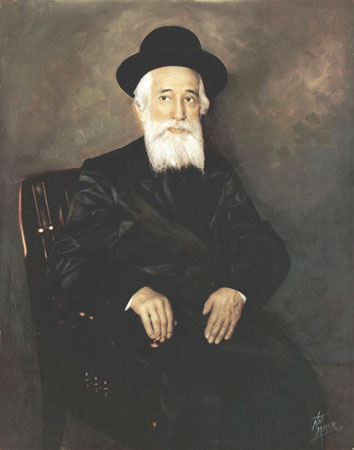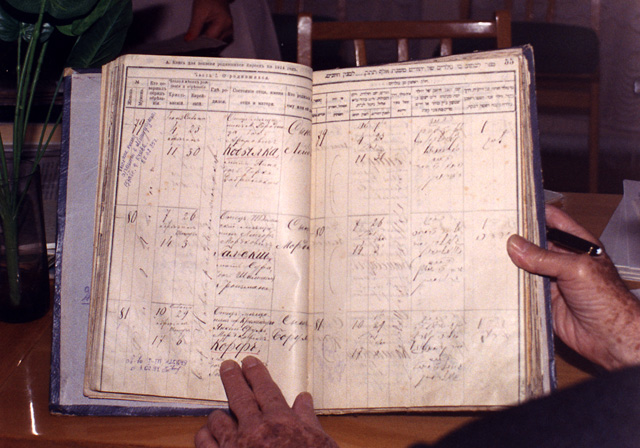THE ZVILLER REBBE

|
GRAND RABBI JACOB ISRAEL KORFF: THE ZVILLER REBBE |
|
RAbbi JAcob Korff’s capabilities were recognized at an early age:
"...As a child [Korff] won local fame as an iluy, a child prodigy in the field of rabbinics, and at the age of seven he won commendation when he delivered an intricate Talmudic discourse. When he was eleven years old he was enrolled in a yeshiva and from there he was sent to various rabbinic seminaries in Lithuania.[1] The three years before his ordination were spent at the yeshiva at Navorodok and when he was ordained he received the s'micha [rabbinical ordination] from some of the leading rabbinic personalities of the century. They included Rabbi Yechiel Michal Epstein, compiler of the Aruch Hashulchan,[2] and the well-known saint and sage, Rabbi Mordecai of Oshmino.[3]
“There followed two years of rabbinic research resulting [in] several treatises which won him further signatures for his s'micha from the famous gaon, Rabbi Chaim Soloveitchik of Brisk, Rabbi Shneirson of Kapust, and Rabbi Weil of Kiev.” [4]
Click here for the
origin of the Korff name.
Rabbi Korff was very involved in the betterment of life in Zvil. He worked at bringing order and rule to the existing Jewish institutions and established many new charitable and religious organizations.[5] He also served as the chief justice of the rabbinical courts.
“In this connection, he was noted for his clear-cut decisions, which he wrote himself… His sole objective at all times was to offer justice and to serve the people with all his heart and soul. Many of the rabbinic authorities hailed these decisions as masterpieces in rabbinic lore and impressive in their analytical scheme.[6]
 |
|
As part of his job as chief rabbi of Zvil, Rabbi Jacob Korff had the responsibility of keeping track of the births, marriages, and deaths of the Jews in the region. His ledgers were stored in the regional capitol, Zhitomir, and can be seen today. This is a close up of some entries from 1917 or 1918 recorded by Rabbi Jacob Korff. The hands in the photograph belong to his son Rabbi Baruch Korff, who visited the archive in 1994. |
Grand Rabbi Jacob Korff did not limit his activities to the Jewish community alone. He served in the kisaunya tsud (government) acting as a liaison between the secular authorities and the Jewish community. In the early 1900s Zvil was a city of about 60,000 inhabitants,[7] equally divided between Jews and gentiles. There were three synagogues and four churches. Most of the Christians were Ukrainian Gregorian (Russian Orthodox), although a sprinkling were Roman Catholic.
|
|
|
A street in Zvil (Novograd Volynsk), 1916 |
Rabbi Korff's son, Baruch, described the makeup of the town at that time: [8]
“The Jews had prospered in Zvil and on the whole had a much higher standard of living than their gentile neighbors. The Jews were the merchants, landlords, physicians, and lawyers. The Christians for the most part depended on the Jews for their livelihood. They worked as domestics in Jewish homes and supplied the labor for the Jewish-owned sugar refinery. Deep resentment existed among the Gentiles who resented their subservient position. The Jews returned their animosity. Little fraternization took place between the two groups but given the economic circumstances they were compelled to get along.”
The years following the Russian revolution in 1917 were chaotic throughout Russia and the town of Zvil did not escape the turmoil.
“One of the horrible aftereffects of the revolution was a wave of pogroms. The first pogrom began on a Friday at dawn in the old market place. Jewish stands and stores were robbed…Christian peasants from the surrounding area spread terror in throughout the entire day of Shabbat [Saturday]. The Jewish community of Zvil, realizing that they couldn’t standup up against the rampaging peasants, sent a message asking for help from the nearby town of Zhitomir. Advisors from Zhitomir responded immediately, and the first Jewish self-defense group was organized under the leadership of Turkanovski, a student. That evening the self-defense group rode through the town in two trucks shooting into the air. The police who were helping the robbers left and the peasants scattered…It was reported that Rabbi Korff took an active part in the self-defense group. The self-defense group risked their lives trying to help the Jews who were robbed and attacked.”[9]
|
|
|
It may be hard to imagine such a small, pious man standing up to Ukrainian and Russian thugs and armed soldiers and policemen, but Grand Rabbi Jacob Korff exhibited great courage during the anti-Jewish riots that occurred in the wake of the Russian Revolution. |
Click here to read more about the anti-Jewish riots in Zvil.
[1] Lithuania was the center of Jewish scholarship in the nineteenth century.
[2] Rabbi Epstein’s treatise, Aruch Hashulchan, provided the “final word” in Halacha at the end of the 1800s. He surveyed the major sources of Jewish law back to the Talmud and showed how the principles of the law evolved over time, and how he came to his own interpretations.
[3] In those days, many Hasidim avoided sending their sons to learn Torah at yeshivas because most yeshivas were under the control of the rabbis of Litta, who opposed the Hasidic movement. The yeshiva where Rabbi Jacob Korff was ordained under the great rabbi, Yishiel Michal Halevy Epstein, apparently was an exception. (Yizkor book Sefer Zvhil)
[4] Anonymous, untitled press release written near the end of Rabbi Jacob Korff’s life in 1952. A notation on the manuscript indicates that it is a copy of a document held by the Boston Public Library. The document bears a stamped date, August 20, 1952 (presumably placed there by the library). The press release described the serious of Korff’s illness, his recent admission to Deaconess Hospital, and anxiety about his future. It then provided the rabbi’s biography. Paul Gass, the grandson of Rabbi Korff, believed that the press release was prepared by a group of rabbis outside Rabbi Korff’s hospital room after he was admitted for major surgery during his final illness. However, portions of it were adapted from the yizkor book Sefer Zvhil and the writing style is quite similar to that found in Flight from Fear, the autobiography of Korff’s son Baruch Korff. It may be that the group of rabbis was actually Baruch, who by this time had extensive experience writing press releases.
[5] Sefer Zvhil
[6] 1952 press release
[7]In Flight from Fear, Baruch Korff states that the population of Zvil (circa 1919) was 30,000. Flight From Fear by Baruch Korff (New York: Elmar Publishers, 1953).
[8] Flight from Fear
[9] Sefer Zvhil